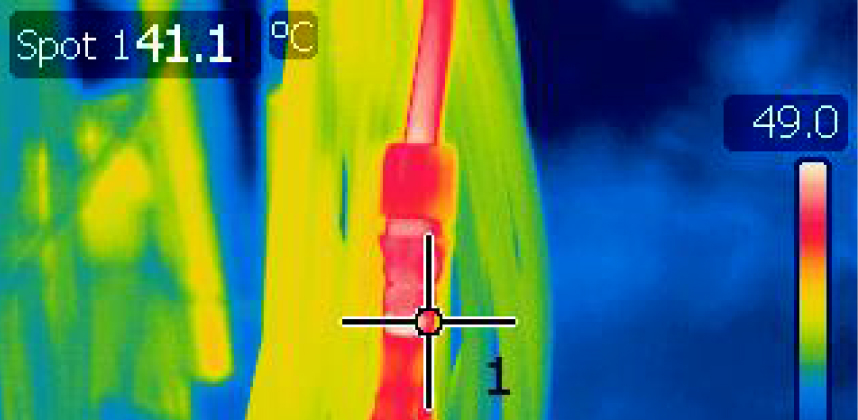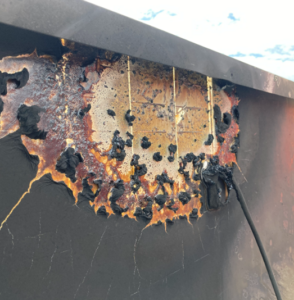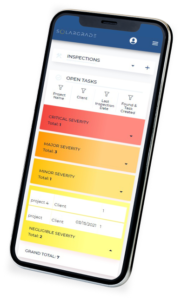PV System Fire Prevention

Helping solar project stakeholders understand the root causes of PV system fires and prevent thermal events.
Fires in PV systems are rare, but they have severe consequences for safety and property damage.
When videos of fires go viral, like one shown here, they damage solar power’s reputation. They’re a threat to our clean energy transition.
It’s time for the global solar industry to tackle fire risks as a team. Let’s come together to share best practices for fire prevention.

Where We Stand
Like all electrical infrastructure, solar PV systems are vulnerable to fires and other thermal events. As more solar is installed worldwide, these destructive and dangerous incidents are more likely to occur.
The first step to addressing any problem is to acknowledge and discuss it transparently. But most solar professionals are reluctant to discuss fires openly.
As field inspection experts with deep experience in root case analysis for thermal events, it is our responsibility to share what we have learned. We believe open discussion of fire prevention best practices is vital for our industry.

Why Now
The Australian solar market’s well-documented problems with DC isolators were an inspiration for our PV Fire Prevention Project. Collaboration and discussion helped get these dangerous, failure-prone devices off the market.
DC isolators were introduced with the goal of helping first responders de-energize PV systems in the event of a building fire, much like the rapid shutdown devices that are now required in the U.S. market.
But DC isolators proved vulnerable to arcing and actually increased the risk of thermal events. As of November 2021, the Standards Australia Committee no longer requires their installation. The regulatory update was triggered by multi-year lobbying efforts by PV system installers.
If industry stakeholders had kept quiet, DC isolators might still be required in Australia today.
Our Primer on Thermal Events
What Solar Industry Stakeholders Need to Know
Thermal events are electrical occurrences that produce uncontrolled, excessive heat that may lead to injury, fire, smoke, sparks, melting or charred equipment, and/or facility damage.
These events include fires and explosions as well as high temperature operations. Thermal events can result in emergency situations and should be treated with the highest priority.
What Should You Do if a PV System Fire Occurs?
The most important step after a thermal event is to properly de-energize the system.
- Disconnect the inverters from AC power at the main utility AC disconnect for a system-wide issue. If a single inverter is isolated, the respective breaker can be shut off.
- Proceed to turn off all switches in the isolated circuit, i.e., the specific inverter breaker, combiner box, and local switch at the affected inverter.
- De-energize the system while adhering to Occupational Safety and Health Administration (OSHA) guidelines.
- Install clear Lock-Out-Tag-Out (LOTO) locks and warnings on the switch or breaker. If breaker cannot be LOTO, add LOTO to the inverter(s)’s local AC disconnect.
- Please note that electrical potential persists on the DC side of the system when PV modules are exposed to light.
Depending on the electrical configuration and isolated equipment, de-energization may only be required for specific strings or modules.
The isolation procedure should at least include the following steps:
- Disconnect the inverter(s) with the affected strings at the local inverter AC and DC disconnect switch.
- Open the respective string fuse- or disconnect-specific home run connectors at the inverter. Ensure disconnected connectors are properly capped and opened fuse block is properly terminated.
- Indicate electrical isolation by labeling the associated inverter and specific modules in the array.
Why do thermal events occur in solar projects?
Thermal events can be caused by external factors or by electrical faults within the PV system.
Typical external factors are lightning strikes and building fires that begin elsewhere on the property then spread to the PV system. While force majeure events or “acts of God” usually cannot be avoided, PV system design considerations can limit their impact and facilitate effective thermal suppression by first responders.
Fires caused by electrical faults within the system are more complicated. An electrical fault is an abnormal electrical circuit that interrupts the intended flow of current through the PV system.
The fundamental root causes of thermal events triggered by electrical faults are typically:
- Overheating through excess current flow, resulting in component failure.
- Improper installation, especially of connectors – learn more in our Ultimate Safety Guide for Solar Connectors.
- Equipment that is defective, damaged, or malfunctioning, such as inverters, combiner boxes, rapid shutdown devices or PV modules.
- Inadequate maintenance, especially the failure to conduct thorough system walkthroughs that identify damaged and degraded equipment for repair or replacement.
Electrical faults that can trigger thermal events include:
- Open circuit: A break in the circuit completely stops the flow of current.
- Short circuit: An excess of current flows between two energized conductors that are unintentionally connected.
- Ground fault: A path between an energized conductor and the ground (or ungrounded equipment) is created unintentionally. These are especially dangerous because any person or piece of equipment resting on the ground can join the circuit and suffer from electric shocks. Furthermore, multiple ground faults can cause a ground loop which has the potential to complete a circuit, resulting in unintended and uncontrolled current flow.
Electrical faults lead to fires when they create:
- Arcing and sparking
- Overheated equipment
Once the system is safely de-energized, the following steps should be followed:
- Determine if other assets are at risk.
Evaluate risks across the entire fleet. Systems with similar major components or system architecture should be de-energized and/or closely monitored. - Determine and correct the root cause of the thermal event.
A root cause analysis of the thermal event should be conducted, and a corrective action plan should be developed and implemented. - Review and update operations and maintenance protocols.
Assess ongoing O&M procedures so that future issues are identified and corrected before a thermal event occurs.
How can solar project stakeholders prevent safety events like thermal events and fires?
Safe and reliable solar operations depend on people working in the field. Professionally trained, well-equipped installers and O&M technicians can identify latent equipment problems before catastrophic failures occur.
Bringing field and office teams together on one digital page is vital: asset managers must receive timely, accurate information from the field to effectively prioritize corrective O&M and ensure safety issues are addressed appropriately.

SolarGrade, the fieldwork management platform developed by HelioVolta, helps workers in the field assess PV system health by:
- Standardizing best-practice inspection protocols
- Documenting findings with actionable descriptions
- Georeferencing issues across project sites
SolarGrade also automates reporting and generates geo-referenced punch lists so asset managers can track issues until remediation.
